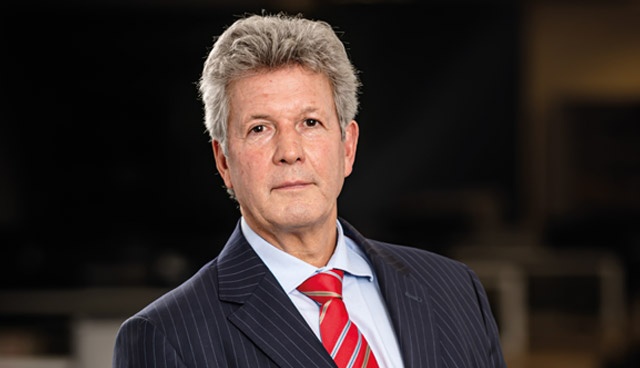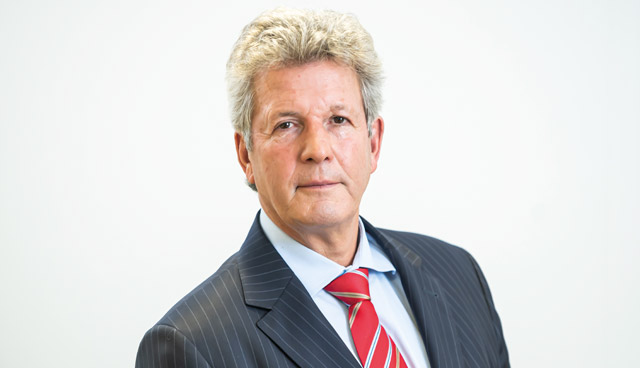
Regulating for energy transformation
5th November 2020
Powering a green economy
8th March 2022Planning for a net zero future

Following the publication of the Energy Strategy, SSE Ireland’s Chairman Mark Ennis discusses the policy priorities needed to meet ambitious 2030 and 2050 decarbonisation targets.
Mark Ennis, Chairman of SSE Ireland, is one of the leading figures in Northern Ireland’s energy market. Throughout his career in the sector he has been a passionate advocate for the pursuit of greater renewable energy penetration to decarbonise electricity supply here. As a pioneer in green energy generation, Ennis has been a key driver behind SSE’s commitment to play its part in powering change in Northern Ireland and helping advocate for the transition to a net zero future.
Since 2008, the UK-listed integrated energy group SSE plc has invested over half a billion pounds in developing Northern Ireland’s sustainable energy infrastructure. As a result its energy supply brand SSE Airtricity is the largest provider of renewable energy to home and business customers in the all-island Single Electricity Market, while its renewable energy business SSE Renewables generates more green energy from 28 wind farms across the island than any other company.
As a keen advocate for climate action, Ennis welcomes the evident shift in awareness amongst the public and business community that has brought the pressing need for climate action to the fore, culminating in the declaration of a climate emergency by the Northern Ireland Assembly in February 2020.
However, two years after such a momentous event, he is disappointed Northern Ireland remains the only region of the UK without climate legislation and believes that Northern Ireland must now have a greater focus on decarbonisation, if it is to take advantage of the opportunities a greener transformation presents.
While a target for overall greenhouse gas emissions reduction remains to be set, a vision for net zero emissions from energy was outlined in the recently published and long-awaited 10-year Energy Strategy, a document which was subsequently followed up in January 2022 with an Action Plan.
While Ennis admits that the strategy took longer than first expected, he is complimentary of the extensive consultation process which departmental officials undertook, as well as the engagement with a wide range of stakeholders which helped shape the Energy Strategy.
“As world-leading developers, operators and owners of offshore wind energy, we recognise that it takes effectively 10 years to deliver an offshore wind farm.”
For its own part, SSE has publicly committed itself to putting its money where its mouth is to power the change needed to meet net zero. As the UK and Ireland’s clean energy champion, SSE last November unveiled its plans to invest £12.5 billion over the next five years, or £7 million a day, in a Net Zero Acceleration Programme to address climate change head on.
This acceleration of SSE’s net zero action plan will see it deliver a fivefold increase in its renewable output and cut carbon intensity by 80 per cent by 2030. Early this February, the FTSE-100 low-carbon infrastructure company announced its four core 2030 business goals, already aligned to the UN’s Sustainable Development Goals (SDGs), were being upweighted to increase the company’s climate ambitions and drive faster decarbonisation across the next decade.
What slice of that investment will reach Northern Ireland will depend largely on how policy in Northern Ireland is shaped to create the best environment for delivering renewable generation infrastructure.
The Energy Strategy delivered two major targets in the form of 70 per cent renewable consumption by 2030 and energy savings of 25 per cent from buildings and industry by 2030. Ennis is quick to point out that, additional to the environmental benefits of developing and deploying higher levels of renewable energy, the ambition also makes economic sense in terms of lowering the cost of energy for consumers.
Recent rises in energy prices have served to highlight Northern Ireland’s volatility in relation to its dependence on imported fossil fuels and, as Ennis states, with renewable energy currently proven to be the cheapest form of energy, Northern Ireland has an opportunity to catapult itself to the forefront of renewable generation and even potentially act as an exporter of renewables through hydrogen.
While onshore wind dominates Northern Ireland’s current renewable generation, reference in the Action Plan to kickstarting offshore and hydrogen technologies is welcomed by Ennis, however, he emphasises the need for action over words.
Additionally, he says that while work must start now on gearing up for offshore deployment and hydrogen technology development to ensure both play a role in decarbonising the energy sector, meeting the 70 by 30 target will rely highly on the further development of onshore wind and solar infrastructure.
“If we analyse what the 70 per cent renewables target means in practice, we see that it will require a doubling of our current renewable energy capacity on to the system by 2030, meaning another 1,300MW of renewables needed. The reality is that none of that will be from offshore wind because, as world-leading developers, operators and owners of offshore wind energy, we recognise that it takes effectively 10 years to deliver an offshore wind farm,” states Ennis.
“In Northern Ireland, we still have not got an offshore consent process, so at best, offshore wind will not play a role in the energy mix until post-2030. So, that effectively leaves us with needing 1,300MW which will need to be generated primarily from onshore wind and some solar. How are we going to achieve that? Really it requires the Department for Infrastructure (DfI) to look at the planning legislation.
“The reality is that the Action Plan for 2030 will deliver nothing unless we get DfI involved and get planning policies and an overarching Planning Strategy aligned with our net zero targets.”
Planning
On 27 January 2022, Infrastructure Minister Nichola Mallon MLA published a report on the review of the implementation of the Planning Act (NI) 2011 including a range of recommendations for changes to the Act. The report was published around the same time as a Northern Ireland Audit Office assessment that the current planning system was not working efficiently and failing to deliver for the economy, communities, or the environment.
Ennis outlines that SSE has an appetite to invest significantly in onshore renewables in Northern Ireland by 2030, however, he emphasises that the current planning system represents too much risk, when compared to competing markets in the UK, Europe and further afield.
Declaring that it “is absolutely vital” that planning risk is reduced if Northern Ireland is to reach its renewable energy targets, Ennis believes four major calls must be made in order for this to happen.
Firstly, following the review, a new planning system must have the road to net zero as a fundamental basis. “I think there should be a clear presumption in favour of renewable energy in any planning decision, including in relation to re-powering and storage co-locating to increase the capability of the system,” Ennis says.
Secondly, he calls for greater transparency in decision-making, believing that any regionally significant and called-in planning decision made by the Department should have the clear economics of that decision spelled out and a full explanation of how the decision was reached. “I think there needs to be a demonstration on any planning decision on how it does, or does not, support the 2050 road to net zero and the aims of the Energy Strategy,” he explains.
“The reality is that the Action Plan for 2030 will deliver nothing unless we get DfI involved and get planning policies and an overarching Planning Strategy aligned with our net zero targets.”
Thirdly, the SSE Ireland Chair believes that it is of equal importance that the same principles must be followed by local development plans put in place by Northern Ireland’s 11 councils.
Discussing how resistance to infrastructure development within some councils could hamper Northern Ireland’s renewable ambitions as a whole, Ennis explains: “Northern Ireland has a decision to make on whether it wants a small number of strategically placed large wind farms, or a large number of smaller ones. In making that decision, there needs to be an understanding that large efficient wind farms bring a much lower cost per MW and so are of greatest benefit to the consumer.”
Finally, Ennis calls for greater clarity in the over-arching ambition for planning, reducing confusion and therefore not necessitating judicial reviews, causing lengthy delays in the process.
Referencing the 2020 decision by Mallon to refuse planning permission for SSE Renewables’ proposed Doraville Wind Farm, which would have seen 33 wind turbines developed that would have generated 118.8MW through an investment of £150 million, Ennis says: “The decision was based on an outdated planning policy, and on what had already been achieved against the 2020 target. It gave no consideration to the considerable community benefit the project could bring and little weight to economic benefit, as well as no consideration to achieving net zero by 2050.
“An outdated policy sends a bad signal to those people who want to invest in Northern Ireland’s onshore renewables. It is a mindset we have to change because we have to show that we are welcoming to development.
“If we can build some security around our energy system, taking away the volatility of gas and oil prices, then Northern Ireland can be an exemplar for sustainable energy. It will add not only to lowering consumer energy costs but will add to Northern Ireland’s attractiveness as an inward investment location.”
Grid
As well as the planning system, Ennis states that another major challenge to Northern Ireland’s renewable targets is the grid. The SSE Chairman asserts that the west of Northern Ireland is paired with Scotland in rating as the best energy source for wind in Europe. However, as Ennis explains, with population density largely located in the east, the current system of transferring power is seeing around 17 per cent of renewable energy generation spilled off the system.
“An efficient planning system would enable grid infrastructure to be put in place to support more efficient energy transfer. Additionally, as set out in the Energy Strategy, technology development, such as storage, allows smarter uses of energy. For example, when there is excess renewable energy this can be utilised to create hydrogen,” Ennis says.
“Interestingly, Siemens, one of the main suppliers of electrolysers used for the conversion of energy to hydrogen, predicted recently that the cost of converters will halve by 2030. Similar to what happened with solar technology, the cost base is going to come down and so Northern Ireland could be in a super position to utilise hydrogen for various sectors such as public transport and its long-distance transport fleet. Tied in with the use of renewable energy to run a transport network of electric vehicles, Northern Ireland really could be transformed.”
He adds: “Another enabler of transformation is the necessary extension of the Utility Regulator’s scope to include the journey to net zero. That is currently not the case and I think it is important that the scope is enlarged to include the target of net zero by 2050, particularly as the Utility Regulator is the primary approver of grid infrastructure investment.”
Skills
The Action Plan for 2022 has committed to carrying out a skills audit for energy decarbonisation to identify gaps and the skills needed from the education and training sectors in the short, medium, and long term. Ennis welcomes the commitment, highlighting the growing competition for skills in relation to renewables globally.
As part of SSE Renewables’ annual Community funding programme, which has provided over £3.4 million from its wind farms to 800 projects in Northern Ireland since 2008, the SSE Renewables Scholarship has provided over half a million pounds to students in higher education in Northern Ireland since 2014. Over 250 scholarships have been awarded to young potential graduates, including with a focus on STEM subjects.
“That is a fundamental move to support the skills programme, which will be very important as we seek to deploy more renewable generation in Northern Ireland,” states Ennis.
Concluding, Ennis says that the 70 by 30 target will be “stretching” and emphasises the importance of cross-departmental support for the net zero pathway. Critically, he believes that progress will not be achieved without significant changes to the planning system and the broadening of the scope of the regulator.
“These changes are fundamental to Northern Ireland’s ambitions to 2030. By 2030 I would like SSE to be able to invest significantly more in Northern Ireland on top of the £500 million we have invested to date. The investment potential exists if the right environment can be created.
“Beyond 2030, offshore wind has significant potential. Again, this will require action to be taken now to facilitate infrastructure development but once delivered, SSE has the capability, skills, and experience to play a critical role.
“Finally, we at SSE have ambitions to further develop solar and hydrogen technologies in addition to offshore wind. SSE is engaged in a number of hydrogen related pilot projects, and we recognise the potential for Northern Ireland to become an exemplar and exporter of hydrogen with a committed effort from all stakeholders.”
Profile: Mark Ennis
Mark Ennis has served over 35 years in leadership positions of UK, Irish and international companies. He currently serves on several boards including SSE Ireland (Non-Exec Chair), W&G Baird (Non-Exec Chair), and Wilson Bio-Chemicals (Director). Mark was honoured with a CBE in the Queen’s Birthday Honours List in 2016 for services to the economy and community in Northern Ireland.
In the private sector, he was a Director of Airtricity and SSE Renewables since 2002 and previously a Senior VP of Chesapeake Corp and CEO of Boxmore Int Plc.
In the public sector, he was most recently Chair of Invest NI from 2010 to 2018.
Mark has an honours degree in economics from Queen’s University Belfast, and an MBA from the Open University. He was honoured with Graduate of the Year by QUB in 2001. In 2019, he was awarded Northern Ireland Non-Executive Director of the Year.

